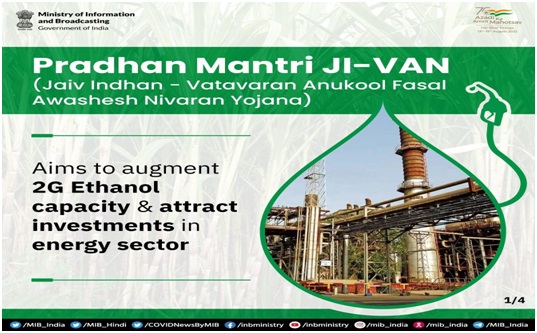Indian National Space Promotion and Authorisation Centre (IN-SPACe) (TOI)

- 04 Aug 2023
Why in the News?
The Indian National Space Promotion and Authorisation Centre (IN-SPACe) has reported that three private sector satellite manufacturers plan to launch their earth observation satellites during this fiscal year.
About Indian National Space Promotion and Authorisation Centre (IN-SPACe):
- IN-SPACe serves as a single-window, independent, and autonomous agency within the Department of Space (DOS).
- It was established as part of the Space sector reforms to encourage and facilitate the active involvement of private players in the space industry.
- IN-SPACe's responsibilities include promoting, enabling, authorizing, and supervising various space activities of non-governmental entities, such as manufacturing launch vehicles and satellites, providing space-based services, and utilizing space infrastructure and facilities.
- Acting as an intermediary between ISRO and Non-Governmental Entities (NGEs), the agency assesses opportunities for leveraging India's space resources effectively and enhancing space-based initiatives.
- Also, IN-SPACe addresses the specific needs and demands of private players, including educational and research institutions, while working in collaboration with ISRO.
- The headquarters of IN-SPACe is located in Bopal, (Ahmedabad).
Samudrayaan (IndiaToday)

- 04 Aug 2023
Why in the News?
India's ambitious Samudrayaan project, aimed at exploring the deep ocean and its resources, is set to send three personnel to a depth of 6000 meters in a submersible vehicle.
About Samudrayaan Project:
- India's inaugural manned mission to delve into the depths of the ocean for exploration.
- Its primary objectives include studying deep ocean resources and conducting biodiversity assessments.
- The mission is designed to ensure minimal disturbance to the ecosystem, focusing solely on exploration.
- Part of the comprehensive Deep Ocean Mission aligned with the Central Government's Blue Economy policy.
- The Ministry of Earth Sciences (MoES) leads the implementation of this ambitious, multi-institutional endeavor.
What is the Blue Economy?
- Blue economy refers to the sustainable use of marine resources for exploration, economic growth, improved livelihoods, and transport while preserving the health of marine and coastal ecosystems.
- In India, the blue economy encompasses a wide range of sectors, including shipping, tourism, fisheries, and offshore oil and gas exploration.
Pradhan Mantri JI-VAN (Jaiv Indhan- Vatavaran Anukool fasal awashesh Nivaran) Yojana (PIB)

- 04 Aug 2023
Why in the News?
In the Lok Sabha, the Ministry of Petroleum & Natural Gas provided details about the Pradhan Mantri JI-VAN scheme.
About Pradhan Mantri JI-VAN (Jaiv Indhan- Vatavaran Anukool fasal awashesh Nivaran) Yojana:
- The scheme was officially notified in March 2019.
- Its main objective is to extend financial support to integrated bio-ethanol projects, facilitating the establishment of Second Generation (2G) ethanol projects using lignocellulosic biomass and other renewable feedstocks.
- It has a financial outlay of Rs. 1969.50 crore, spanning the period from 2018-19 to 2023-24.
- Financial assistance of Rs. 150 crore is offered per project for commercial projects, while demonstration projects receive Rs. 15 crore per project.
- The Ministry of Petroleum and Natural Gas serves as the nodal ministry for this scheme.
What is Lignocellulosic Biomass?
- Abundant Source: It is found in agricultural and forestry residues, as well as dedicated energy crops.
- Biofuels and Bio-based Products: Lignocellulosic biomass holds promise as a sustainable feedstock for producing biofuels like second-generation ethanol and various bio-based products.
- Challenges: Efficiently breaking down its complex structure to release sugars for fermentation or chemical conversion is a key challenge.
- Innovative Technologies: Researchers are exploring enzymatic hydrolysis and thermochemical treatments to unlock its energy potential.
- Green and Sustainable Future: Utilizing lignocellulosic biomass can reduce reliance on non-renewable resources and mitigate environmental impacts linked to conventional energy production.
Himalayan vulture bred (The Hindu)

- 04 Aug 2023
Why in the News?
The first-ever instance of captive breeding of the Himalayan vulture in India has been successfully recorded at the Assam State Zoo in Guwahati by researchers.
About Himalayan Vulture:
- Scientific Name: Gyps himalayensis
- It is a rare and the largest bird species native to the Himalayas.
- Habitat:
- The Himalayan vulture primarily inhabits higher regions of the Himalayas and the Tibetan Plateau, typically found at elevations above 1500 meters.
- This species has a distribution range that extends from western China, Kazakhstan, Uzbekistan, Kyrgyzstan, Tajikistan, Afghanistan, and Pakistan to the eastern part of the Himalayan mountain range, including India, Nepal, and Bhutan, and further to central China and Mongolia.
- Description:
- This vulture is impressively large, featuring a sandy brown plumage with a pale, featherless head. In flight, it displays black primaries and a distinctive small-headed, squared-winged appearance.
- Himalayan vultures are usually spotted alone or in small groups, but they gather in large flocks when feeding on a carcass.
- Conservation status:
- The Himalayan vulture is categorized as "Near Threatened" on the International Union for Conservation of Nature (IUCN) Red List of Threatened Species.
- To ensure its preservation, the species is covered under the Multi-species Action Plan (MsAP) for the conservation of African-Eurasian vultures and is also included in national Action Plans in India, Bangladesh, Nepal, and Cambodia.
- Threats:
- The most significant potential threat to this vulture species is believed to be mortality resulting from the ingestion of diclofenac and other vulture-toxic non-steroidal anti-inflammatory drugs (NSAIDs), commonly used in livestock, particularly in South Asia.
CHD1L gene (DownToEarth)

- 04 Aug 2023
Why in the News?
A new study indicates that some individuals of African descent have a CHD1L gene variant that may be involved in controlling the human immunodeficiency virus (HIV).
What is the CHD1L gene?
- The CHD1L gene encodes proteins that aid in repairing DNA damage within the body.
- A specific variant of the CHD1L gene is found predominantly in the African population and has been associated with a decreased viral load (amount of HIV in the blood) of HIV-1, the most common and severe type of HIV compared to HIV-2.
- Through the analysis of DNA from nearly 4,000 people of African descent living with HIV-1, researchers identified the presence of a gene variant of CHD1L located on chromosome 1.
- Individuals carrying this particular gene variant exhibited a low viral load, reducing their risk of transmitting the virus and slowing the progression of their own HIV-related illness.
- The study suggests that between 4% and 13% of people with African origins could be carrying this specific CHD1L gene variant.
